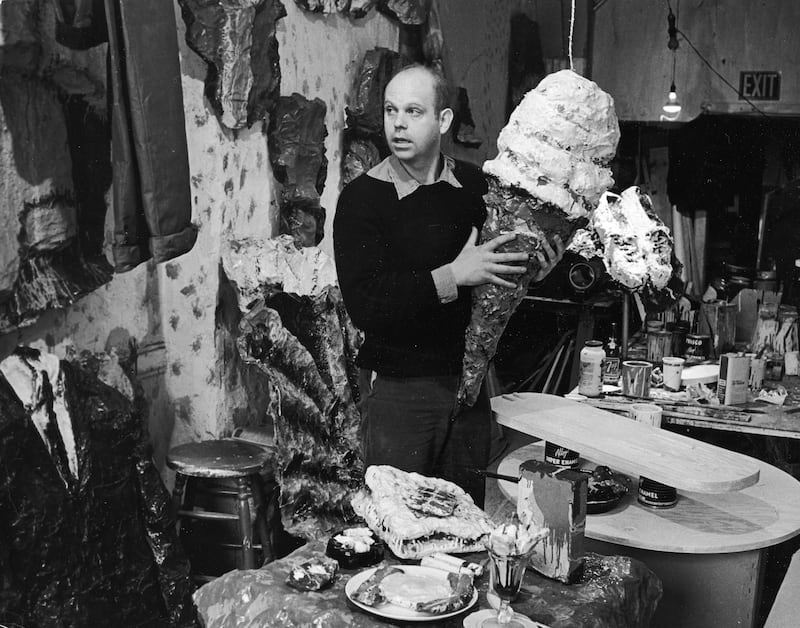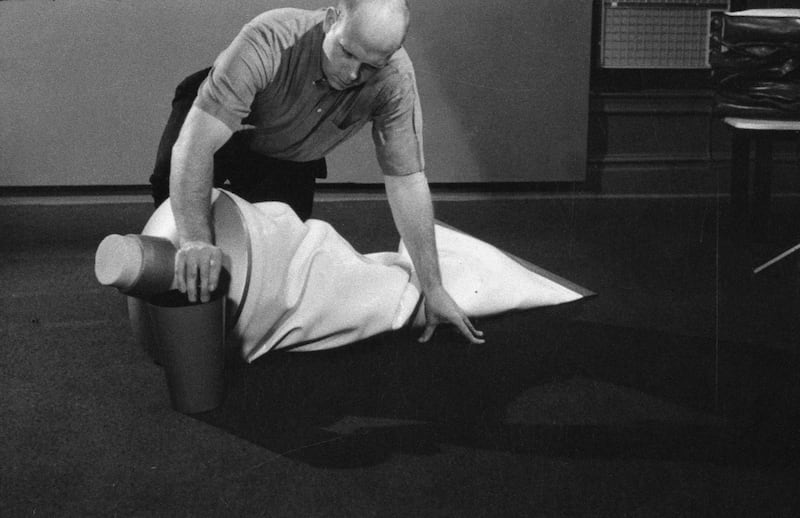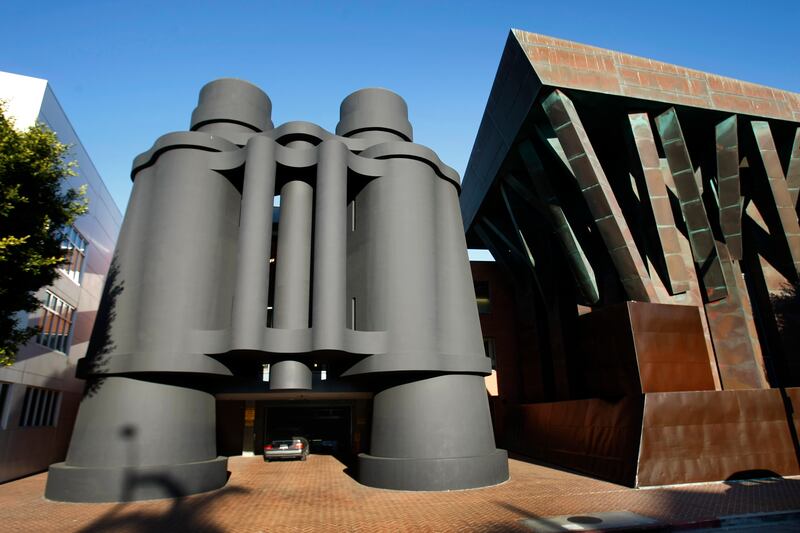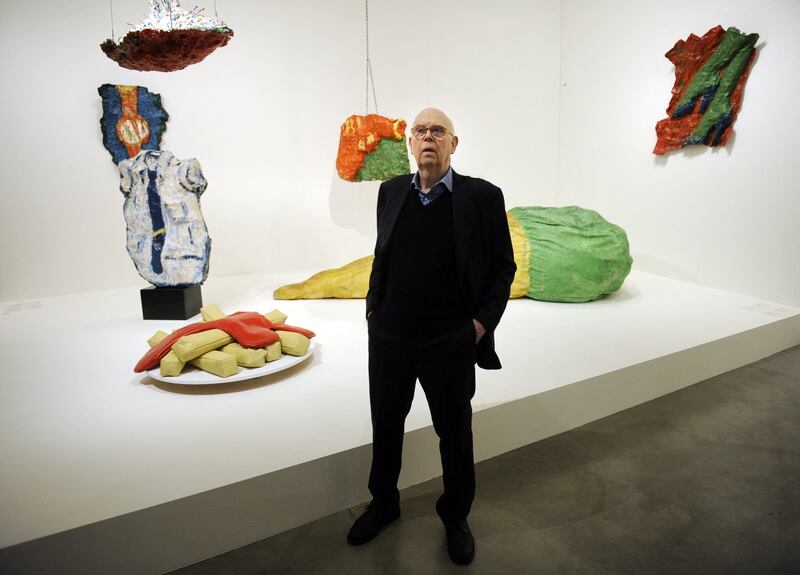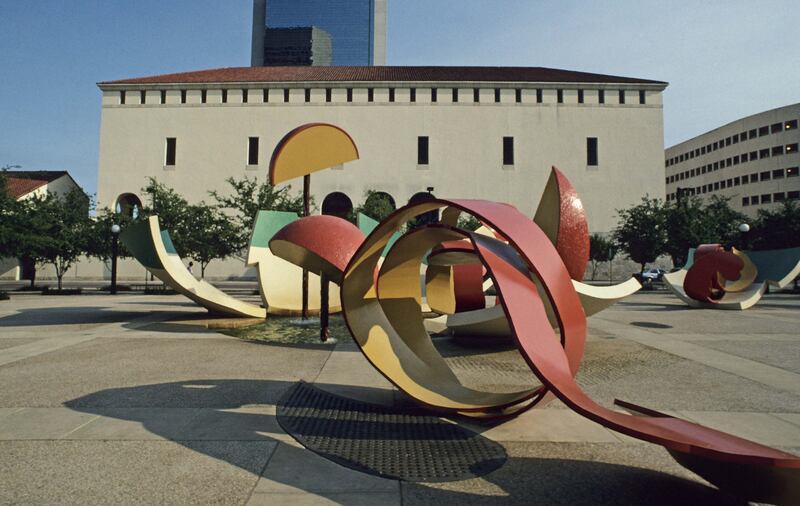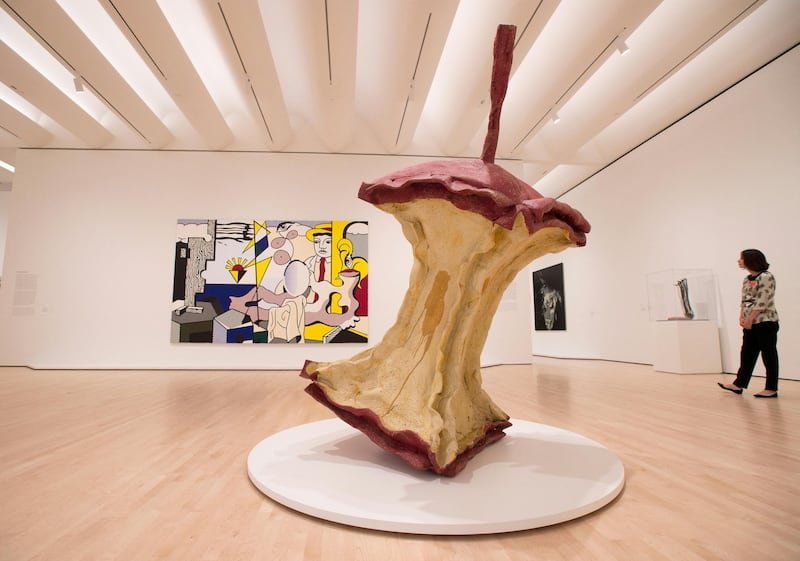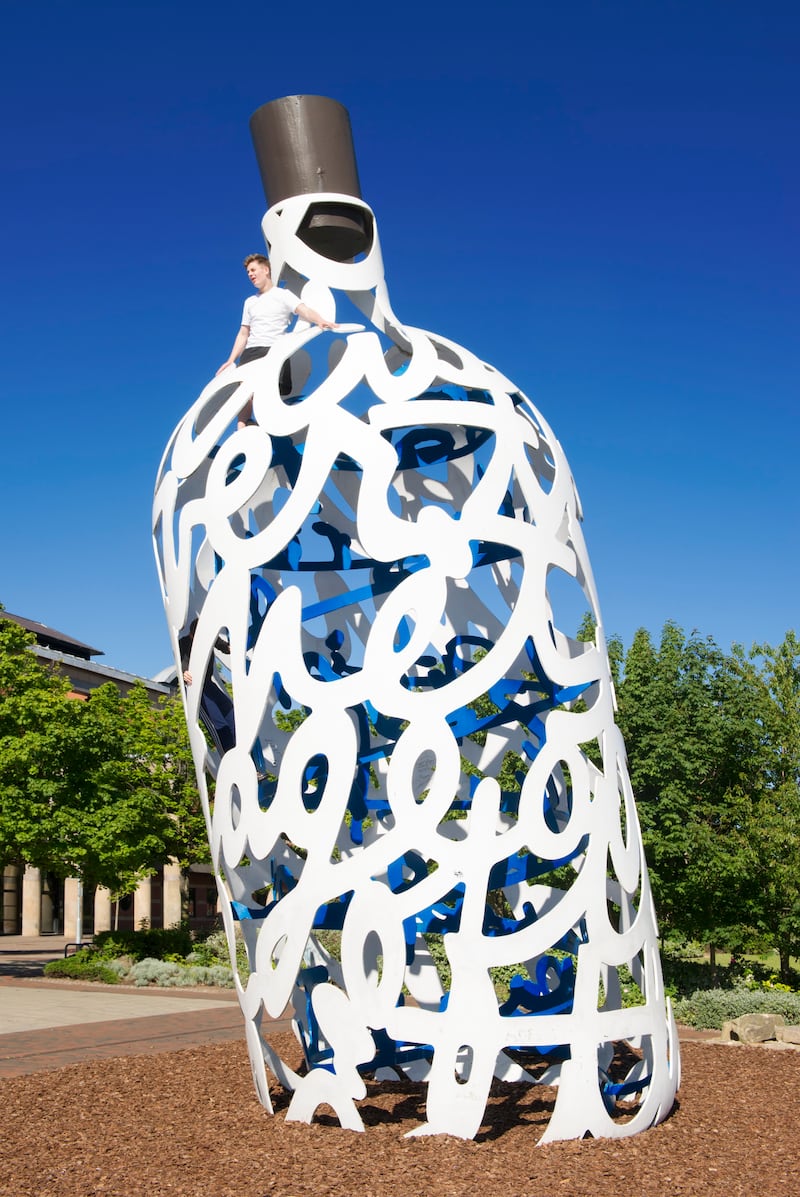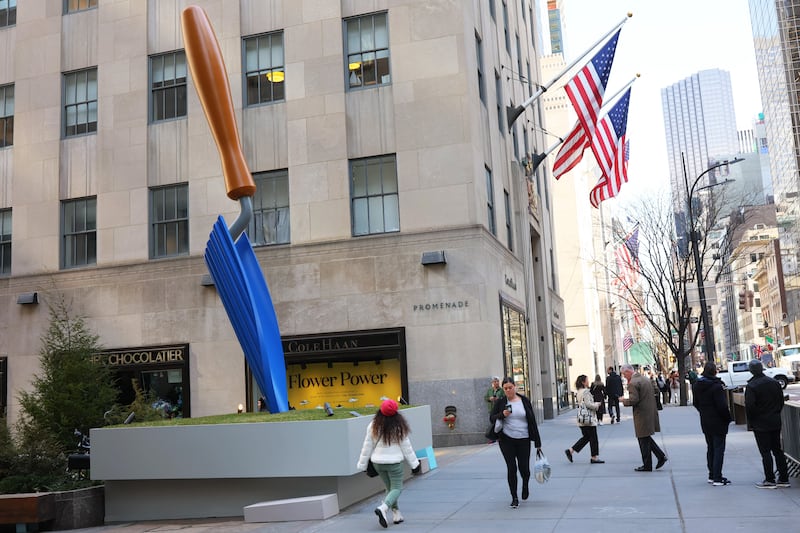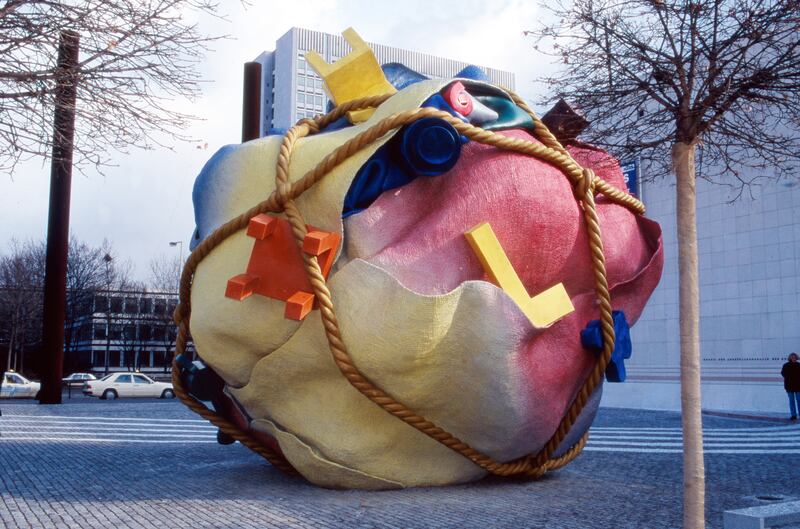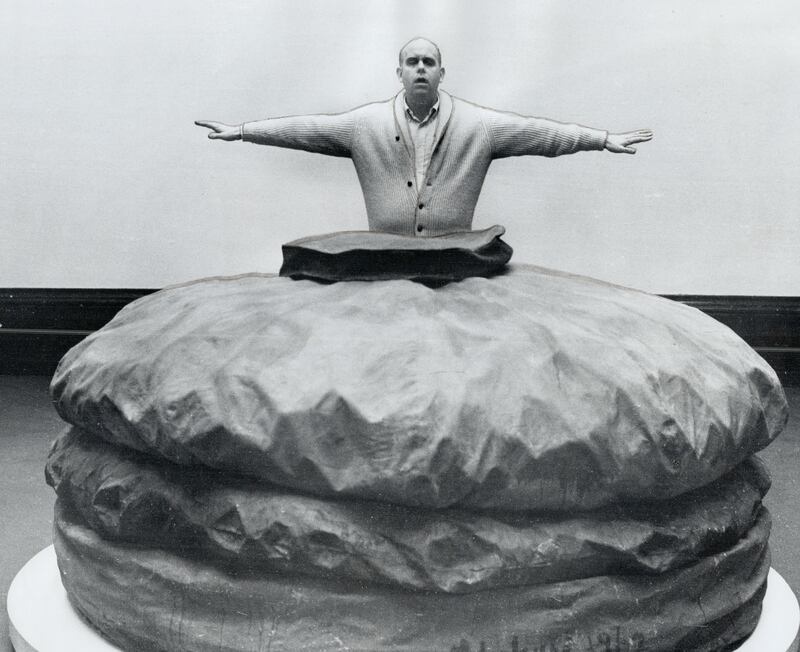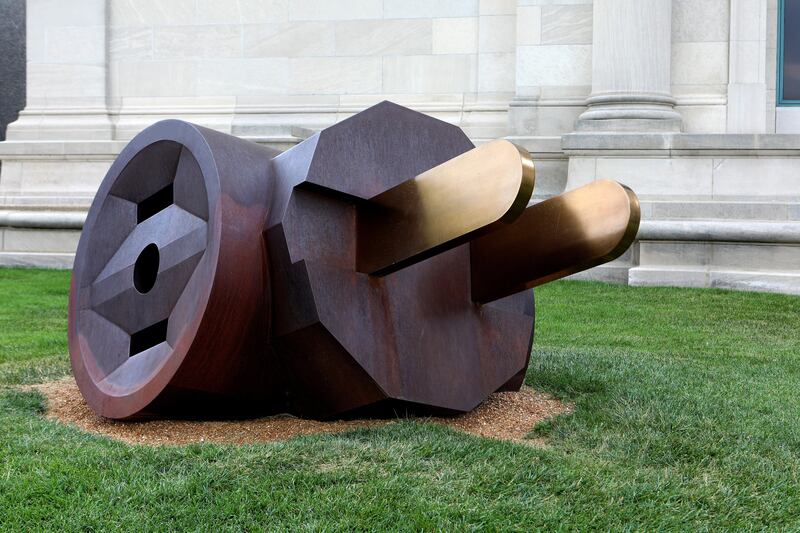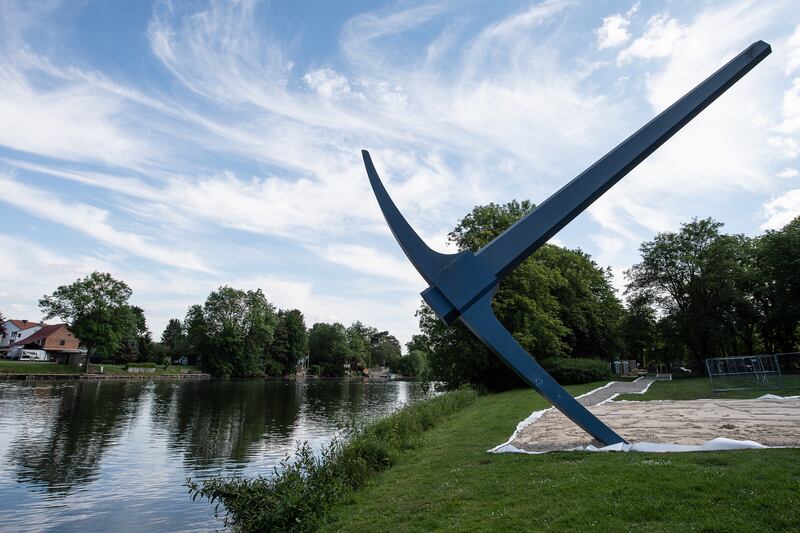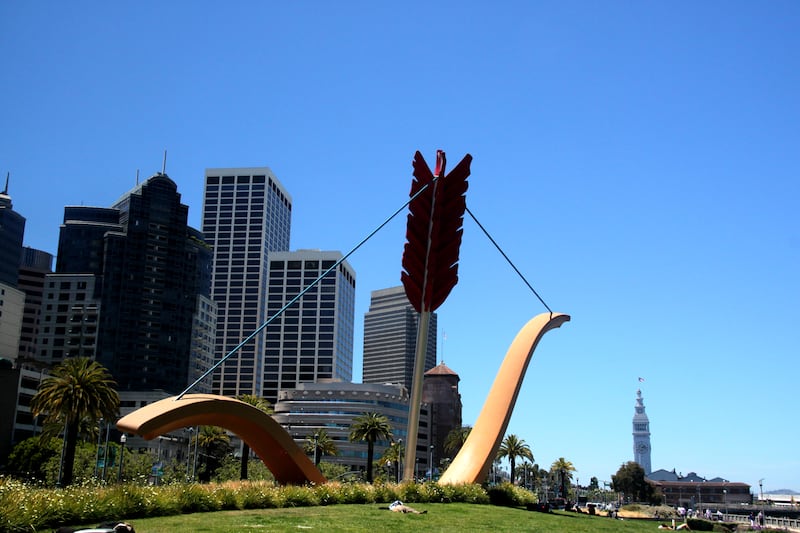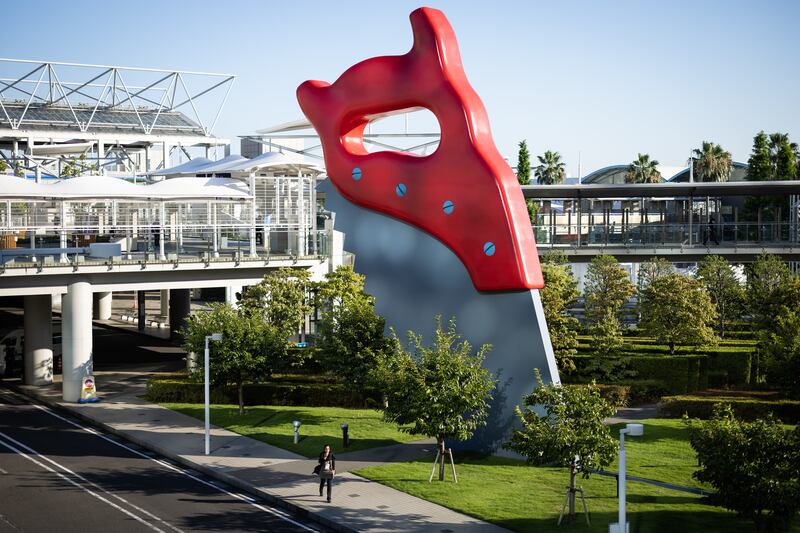Claes Oldenburg, the Swedish-born American artist and key figure in the pop art movement, died at the age of 93 on Monday.
Pace Gallery in New York, which represented the renowned artist since the 1960s, announced Oldenburg's death.
“I was honoured to have this great friendship with one of the most radical artists of the 20th century. In addition to his inextricable role in the development of pop art, he changed the very nature of sculpture from hard to soft, and his influence can be seen to this day,” said Arne Glimcher, the founder and chairman of Pace.
Scroll through the gallery above for pictures of Claes Oldenburg's best known works
Oldenburg was a key figure in the pop art movement; his concepts and work has influenced countless artists, writers, designers and filmmakers.
He was best known for his public art installations, which feature colossal, animated sculptures of everyday objects. Other themes that differentiated Oldenburg from his peers were his conceptual drawings of playful and absurd ideas such as his 1965 sketch depicting a gigantic teddy bear plonked in Central Park, New York City.
Many of Oldenburg’s works were created and developed in collaboration with his wife Coosje van Bruggen, who died in 2009.

Oldenburg's career began in the 1950s in New York when abstract expressionism was at its peak. The movement was a reaction to the horrors of the Second World War and explored the existential, to express the feeling of awe while inspiring an emotional reaction from the viewer.
Oldenburg, along with a small group of his contemporaries at the time, was more interested in the contemporary real world than the emotional one. Mass production, advertising, film, comic strips, massive bill boards, snappy copywriting and the material elements of human existence was much more exciting for Oldenburg.
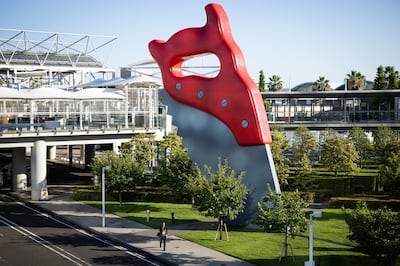
At the start of his career Oldenburg created performance art, blurring the boundaries between reality and performance, including elements of the city into his work — a theme that proved essential for the rest of his practice.
During the 1960s, pop art was gaining momentum thanks to the works of Oldenburg’s contemporaries: Andy Warhol, who was already painting famed American objects such as Coca-Cola bottles, dollar bills and celebrities like Marilyn Monroe; and Roy Lichtenstein’s large comic strip paintings such as Drowning Girl, which were being hailed as revolutionary.
During this time in the art world, Oldenburg’s focus turned to sculpture and his interest in everyday objects was obsessive.
Household appliances, ice cream cones, hamburgers, a rubber stamp and lipsticks were replicated and enlarged into unfamiliar, often imposing dimensions and placed across cities.
One of Oldenburg’s most famous installations is the 1976 piece Clothespin. A 13-metre, nine-tonne black steel sculpture of an enlarged clothespin located at Centre Square in Philadelphia.

Not only did he push the boundaries of what art can be, challenging us to look at the objects in our lives in a new light, but he also made art more accessible and available to a global audience.
